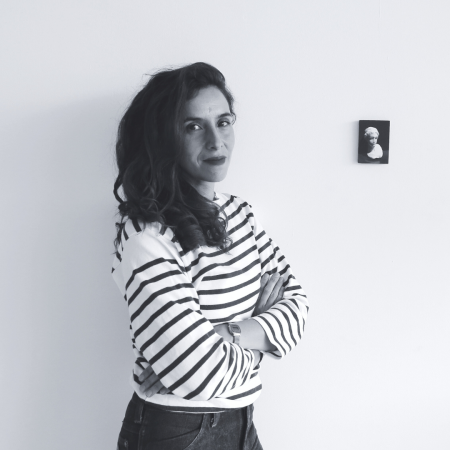
Rose Ekwé : Inscrire le tissage dans une démarche durable et innovante
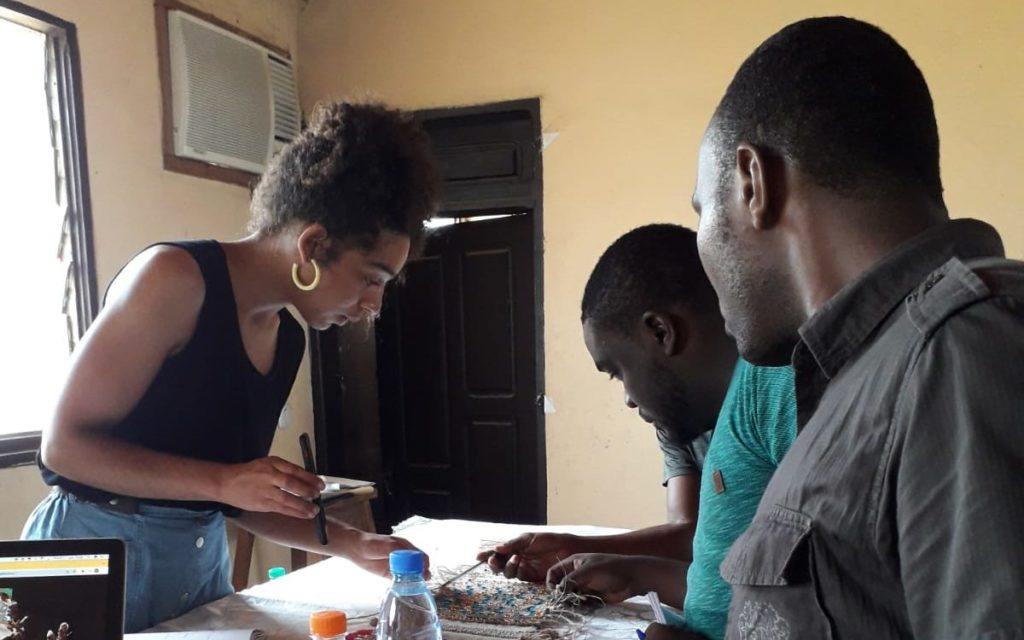
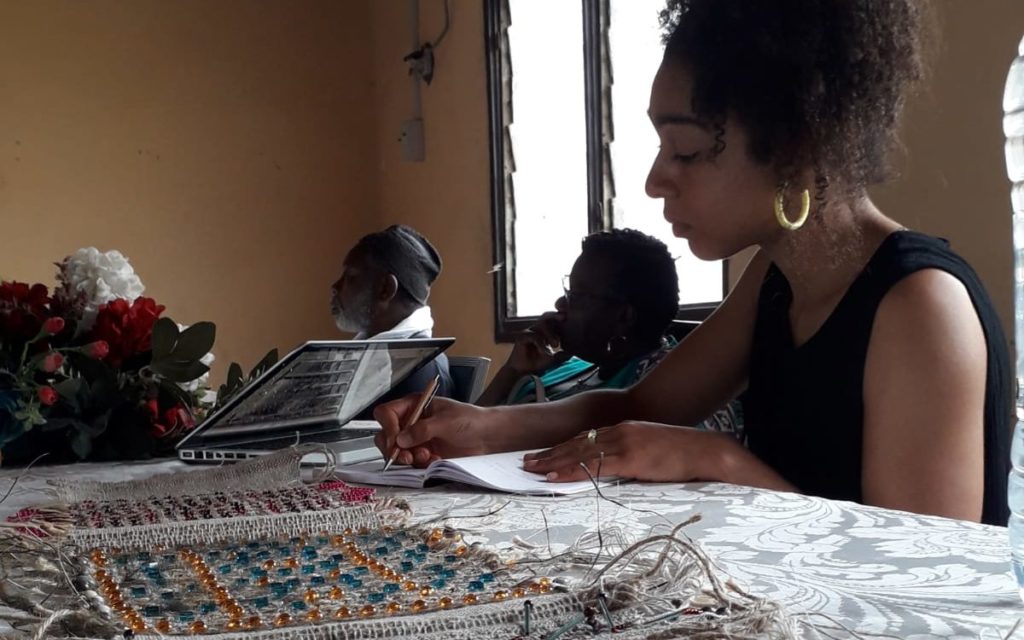
Designer textile et tisserande, Rose Ekwé est diplômée de l’École Duperré à Paris et de la Haute école des arts du Rhin de Mulhouse. En 2019, elle fonde son atelier de tissage et de création textile artisanal dans lequel elle produit ses propres fils à tisser, brevetés et compostables, réalisés à partir d’algues.
C’est ensuite avec ces fils qu’elle tisse artisanalement des textiles d’exception, surprenants et vertueux pour des projets à destination de la décoration d’intérieur. En 2022, elle s’installe au JAD où elle poursuit sa démarche de création et de recherche autour du tissage de fibres naturelles, notamment dans le cadre de collaborations avec d’autres créateurs comme l’ébéniste Albane Salmon / Atelier Sauvage.
D’octobre à novembre 2023, Rose Ekwé part en résidence au Cameroun avec la plasticienne Shivay la Multiple, rencontrée pendant sa formation, pour étudier la jacinthe d’eau et les possibilités de valorisation de cette plante invasive dans l’univers du textile. Dans cet entretien, elle revient sur cette expérience de résidence, et nous partage ses réflexions sur sa pratique marquée par l’expérimentation, la recherche autour de la matière et l’engagement pour la transmission et la durabilité dans la création.
Dans le cadre de votre recherche autour de la matière et du tissage de fibres naturelles vous avez passé un mois et demi au Cameroun. Quels étaient les objectifs de cette résidence et quelles perspectives vous a-t-elle ouvert ?
C’est la place centrale que tient l’eau dans ma pratique et dans l’imaginaire artistique de Shivay la Multiple qui nous a tout d’abord réunies. J’explore en effet les possibilités d’utilisation de fibres naturelles dans le tissage, en particulier issues de plantes et algues invasives, se développant dans les milieux aquatiques. A travers cette démarche, il s’agit de valoriser des plantes invasives perçues comme problématiques pour en faire une matière première qui peut être sublimée par le tissage. De son côté, Shivay la Multiple développe une réflexion autour du fleuve en tant qu’entité politique, économique, poétique, et spirituelle. Une recherche qui se déploie à travers différents médiums, de la performance et l’installation à la vidéo en passant par l’utilisation de techniques de perlage et des savoir-faire autour de la calebasse.
L’eau et en particulier les fleuves camerounais du Fiko et du Wouri ont été au cœur de cette résidence, rendue possible grâce au soutien financier de l’Institut Français et de la Ville de Paris. Depuis peu, ces cours d’eau sont en effet envahis par la jacinthe d’eau, entraînant des bouleversements sur le plan environnemental, économique, mais aussi culturel, car pour la population de cette région du Littoral, les Sawa – littéralement “peuple de l’eau” -, le fleuve revêt une importance symbolique et culturelle fondamentale.
Au cours de cette résidence, notre objectif a donc été de comprendre la transformation de ces fleuves, et ses impacts sur la vie locale, des difficultés dans le domaine de la pêche aux limitations de déplacement, en passant par le bouleversement des écosystèmes et des imaginaires. Nous avons donc consacré une grande part de notre temps à l’observation et aux échanges avec les acteurs locaux. Nous avons ainsi rencontré les instances de la région du littoral, des chefs de villages, des maires, des artistes, ainsi que des habitants de Ndoulou-Badou, le village dans lequel nous étions basées, qui est aussi le village dont mon père est originaire. Ces nombreuses discussions nous ont permis de mieux comprendre leur rapport au fleuve et les implications politiques de cette invasion, mais aussi de recueillir leurs idées et leurs points de vue sur notre projet de valorisation de la jacinthe d’eau, dans une démarche de co-construction avec les habitants et les acteurs locaux.
En parallèle, nous avons chacune collecté du matériel : sous la forme de notes et de vidéos et sous la forme de prélèvements pour pouvoir mener des premières expérimentations de tissage avec la jacinthe d’eau. Puis, ensemble, nous avons créé des premiers échantillons de pièces de textile faisant dialoguer les motifs du tissage avec ceux du perlage et intégrant la jacinthe, de la racine à la tige.
Cette résidence nous a donc permis de prendre contact avec le terrain et ses enjeux, ainsi qu’avec la matière : une première étape pour ce projet d’utilité sociale, écologique et à visée créatrice. Aujourd’hui, il s’agit de mûrir tous ces échanges pour envisager au mieux la suite. Enfin, si nous voulons un jour pouvoir intégrer la jacinthe d’eau aux matériaux avec lesquels nous travaillons, au même titre que mes gélofils®, il est essentiel que nous approfondissions nos recherches autour de la jacinthe comme matière première pour le tissage et l’objet : sa résistance dans le temps, ses propriétés, l’évolution de sa couleur et de sa texture dans le temps, etc.
Votre pratique est très centrée sur la recherche autour des matériaux, comme en témoigne le travail que vous menez dans le cadre de cette résidence. Comment cette démarche s’est-elle construite au fil de votre parcours ?
Ma démarche de création a toujours reposé sur la transformation de matières en textile. Je suis en effet fascinée par l’infinité des possibilités qu’offre ce champ d’expérimentation : tout peut devenir textile. Dans mon engagement écologique, je cherche à mettre au point des fils à partir de matériaux biosourcés et compostables. C’est ainsi que j’ai créé dans le cadre de mon projet de diplôme les gélofils®: des fils réalisés à partir d’algues grâce à un procédé d’abord très empirique – les premières expérimentations ayant été réalisées dans ma cuisine – et qui s’est progressivement formalisé à travers la collaboration avec des ingénieurs. Depuis, je continue de perfectionner ces gélofils® notamment grâce à des études techniques en laboratoire visant à stabiliser la formulation et à éprouver les propriétés de ce matériau, tout en ouvrant ma recherche à d’autres matériaux, comme les pailles de mer, le bois ou la jacinthe d’eau.
Et puis il y a eu ma rencontre avec le tissage. Si au premier abord, la complexité de cette technique m’est apparue comme une contrainte, elle s’est progressivement avérée être un incroyable levier de création. Avec le tissage, le motif est à la fois esthétique et structurel : la technique, les matériaux et l’esthétique dialoguent. A chaque nouveau matériau employé, la structure doit donc être réadaptée, et l’esthétique se réinvente. Cette technique offre donc une infinité de possibilités de détourner les matériaux, tout en créant des motifs et des textures toujours plus variés. Et puis il y a ce lien très fort avec la matière puisqu’on est en interaction directe avec l’étoffe qui se fabrique.
Ces créations alliant réflexion technique et esthétique constituent ensuite des pièces décoratives, prenant la forme de panneaux muraux, séparateurs d’espaces, revêtements ou claustras.
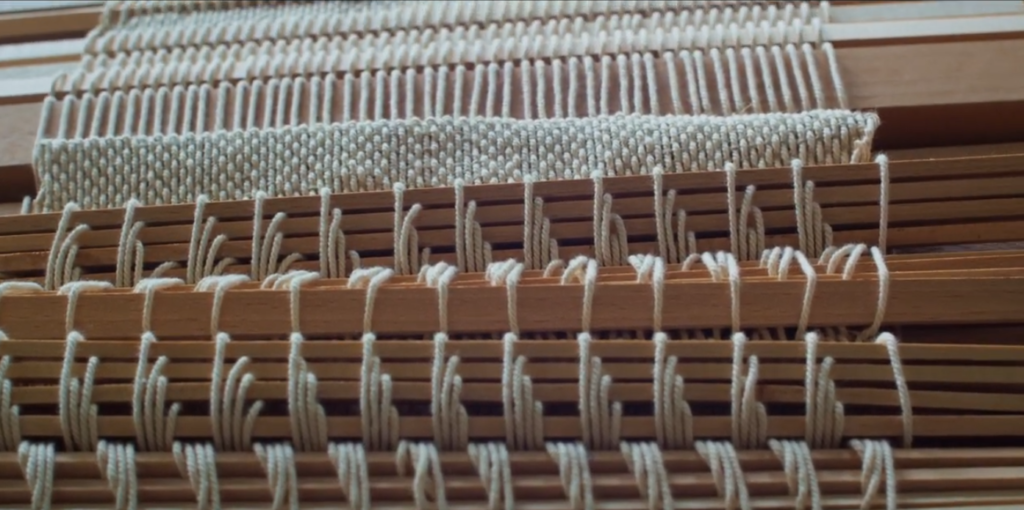
Aujourd’hui, vous consacrez aussi une part de votre activité à la transmission.
Depuis quelques mois en effet je dispense des ateliers à des particuliers et je prends beaucoup de plaisir à ces temps d’échanges et de transmission. Des moments qui me permettent aussi de sensibiliser le grand public à cette technique qui est finalement assez méconnue. En lien avec le JAD, j’interviens également dans le cadre d’un programme d’Éducation Artistique et Culturelle PACTE (Projet Artistique et Culturel en Territoire Éducatif) auprès des élèves du Collège Joliot Curie de Bagneux. J’interviens également dans le dispositif départemental Chemin des arts pour le parcours “savoir-faire ensemble” proposé par le JAD en partenariat avec La Source Rodin. Avec ces élèves, il s’agira de s’interroger sur ce qu’est le textile, ce qui constitue une matière première, ses propriétés, mais aussi la technique du tissage, et le protocole qu’il faut mettre en place puis suivre quand on pratique cette technique. Autant de questionnements qui irriguent ma pratique et qu’il me tient à cœur de partager aujourd’hui avec des plus jeunes.
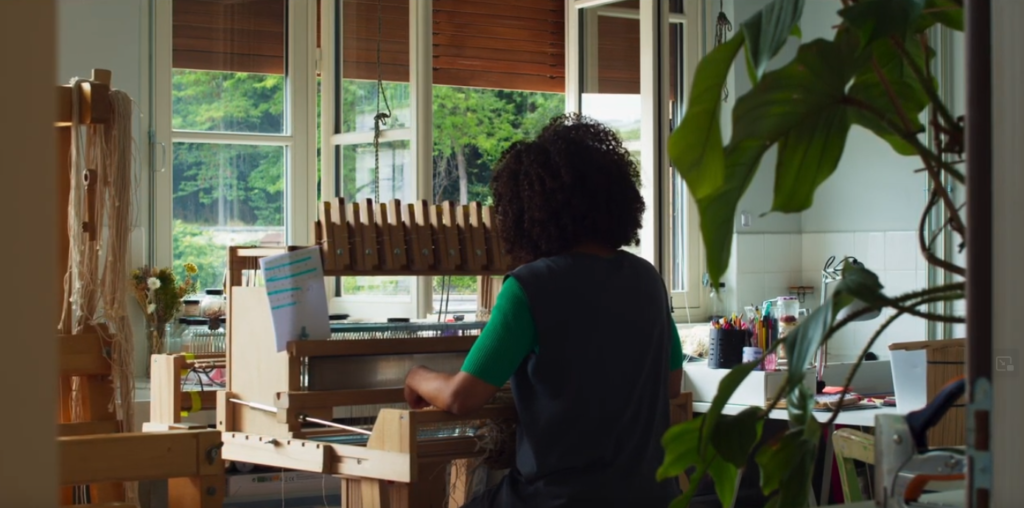
Propos recueillis par Brune Schlosser
Chargée de projets culturels et patrimoniaux à l’INMA et correspondante de l’INMA au JAD
Sur la même thématique

Juana García-Pozuelo, rencontre entre l’idée et la main

Lucie Ponard, l'écologie des matériaux
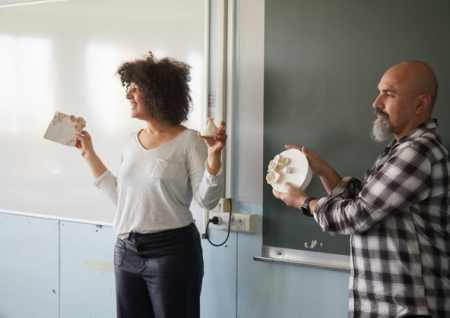
Matière à Penser, un programme d'excellence dédié aux métiers d'art
